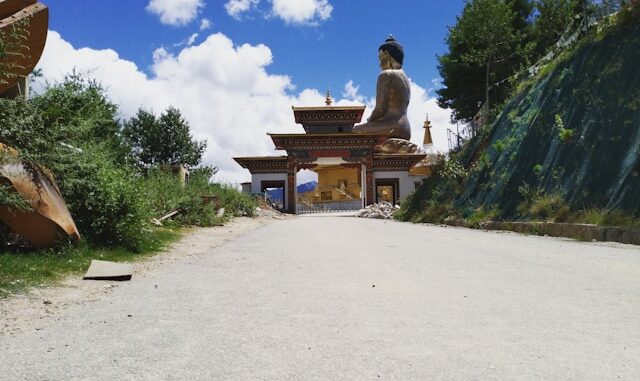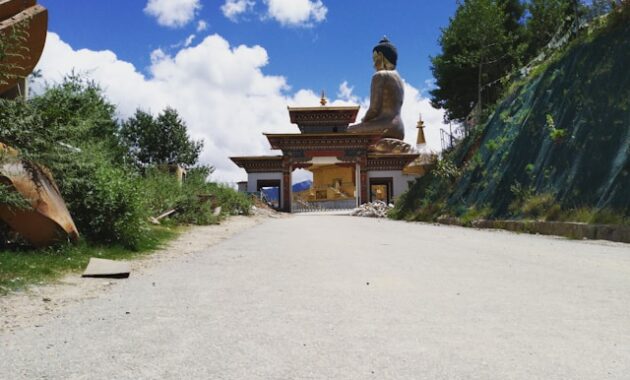
Introduction to Traditional Bhutanese Architecture
Nestled in the Eastern Himalayas, Bhutan is a nation where ancient traditions and cultural values remain deeply rooted. This connection to heritage is nowhere more visible than in the traditional Bhutanese homes, which reflect the country’s devotion to sustainability, harmony, and spiritual balance. Built using natural materials like stone, wood, and mud, these dwellings are a powerful symbol of Bhutanese identity and Buddhist philosophy.
Architectural Features That Embody Bhutanese Values
Use of Natural Materials
Traditional Bhutanese homes are constructed with rammed earth, timber, and stone, all sourced locally. This practice is not just about availability but speaks to Bhutan’s commitment to environmental stewardship. The reliance on biodegradable and non-toxic materials illustrates a deep respect for nature—central to the nation’s guiding philosophy of Gross National Happiness (GNH).
Absence of Nails in Construction
A standout feature of Bhutanese architecture is the absence of nails or metal fasteners. Instead, wooden joints and intricate interlocking systems are employed, showcasing skilled craftsmanship passed down through generations. This method symbolizes the value of patience, collaboration, and precision—pillars of Bhutanese societal conduct.
Three-Tiered Design
Traditional Bhutanese homes typically consist of three floors, each serving distinct and symbolic purposes:
- Ground Floor: Often used for keeping livestock or storage, reflecting self-sufficiency and a close relationship with agriculture.
- Second Floor: This is the living space for the family, signifying unity, familial bonds, and hospitality.
- Top Floor (Attic): Reserved for drying crops or for religious purposes, usually housing a shrine room, emphasizing spiritual devotion and daily Buddhist practices.
Ornamental Woodwork and Symbolism
Intricate wood carvings adorn window frames, doors, and balconies, often painted with sacred symbols and auspicious motifs such as the endless knot, lotus flower, and dragons. These aren’t merely decorative—they represent protection, prosperity, and enlightenment. Each motif carries Buddhist significance, aligning domestic life with spiritual well-being.
Community and Social Harmony in Bhutanese Housing
No Fencing Between Homes
One of the most telling aspects of Bhutanese social values is the absence of boundary fences between homes. This open layout encourages neighborliness, trust, and community cohesion. It reflects the Bhutanese belief in collective welfare over individual possession, resonating with their broader cultural ethos of interdependence.
Shared Labor and Communal Building
Construction of homes is often a community effort, involving help from extended families and neighbors. This practice, known as “dzomduen”, exemplifies communal cooperation and mutual respect. The act of building a home becomes a social ritual, reinforcing kinship and collective identity.
Spirituality and Sacred Spaces
Incorporation of Altar Rooms
Every traditional Bhutanese home includes a shrine or altar room, usually on the top floor. This room is dedicated to prayer, meditation, and religious rituals, often decorated with images of Buddhist deities, thangka paintings, and butter lamps. This architectural element reveals how deeply spirituality is integrated into daily life, offering a constant reminder of compassion, mindfulness, and moral integrity.
Blessing of Homes
Before occupying a new house, it is customary for monks to perform rituals and blessings, ensuring the dwelling is free from negative energies. These practices not only underscore the importance of spiritual well-being but also show a commitment to living in harmony with unseen forces and natural spirits.
Adaptation to Geography and Climate
Sloped Roofs and Extended Eaves
The sloped roofs with broad eaves help protect homes from the heavy monsoon rains and snowfall in the highlands. This design illustrates the Bhutanese value of adaptability and resilience, aligning architecture with the natural elements rather than resisting them.
Thick Mud Walls for Insulation
Homes in colder regions use thick earthen walls that offer natural insulation, reducing the need for artificial heating. This eco-conscious approach demonstrates a holistic respect for nature, aligned with Bhutan’s carbon-negative goals.
Sustainability as a Core Principle
Bhutan is the only carbon-negative country in the world, and its traditional homes contribute significantly to this achievement. The long-lasting, biodegradable construction materials, minimal environmental footprint, and renewable resource usage are all testaments to Bhutan’s eco-centric worldview. These homes are not temporary shelters, but enduring symbols of sustainability and reverence for nature.
Cultural Preservation Through Architecture
Government Regulations and Heritage Conservation
To preserve its unique architectural heritage, the Bhutanese government enforces strict building codes that require modern homes to incorporate traditional designs and materials. This policy highlights the nation’s commitment to cultural preservation, ensuring that urbanization does not erode spiritual and cultural identity.
Educational Transmission of Craftsmanship
Carpentry, masonry, and traditional architecture are taught in vocational schools and monasteries, keeping these skills alive for future generations. This educational model reinforces intergenerational respect and continuity, values deeply embedded in Bhutanese society.
Influence on Modern Bhutanese Architecture

Modern buildings in Bhutan, including hotels and public offices, integrate traditional elements such as arched windows, carved cornices, and whitewashed stone walls. This blend of the old and the new showcases Bhutan’s commitment to progress without cultural compromise.
These homes are not merely residences—they are living reflections of a collective philosophy that values peace, community, spirituality, and environmental balance. The aesthetic appeal is only the surface; beneath it lies a deep well of meaning, nourished by centuries of spiritual wisdom and communal harmony.